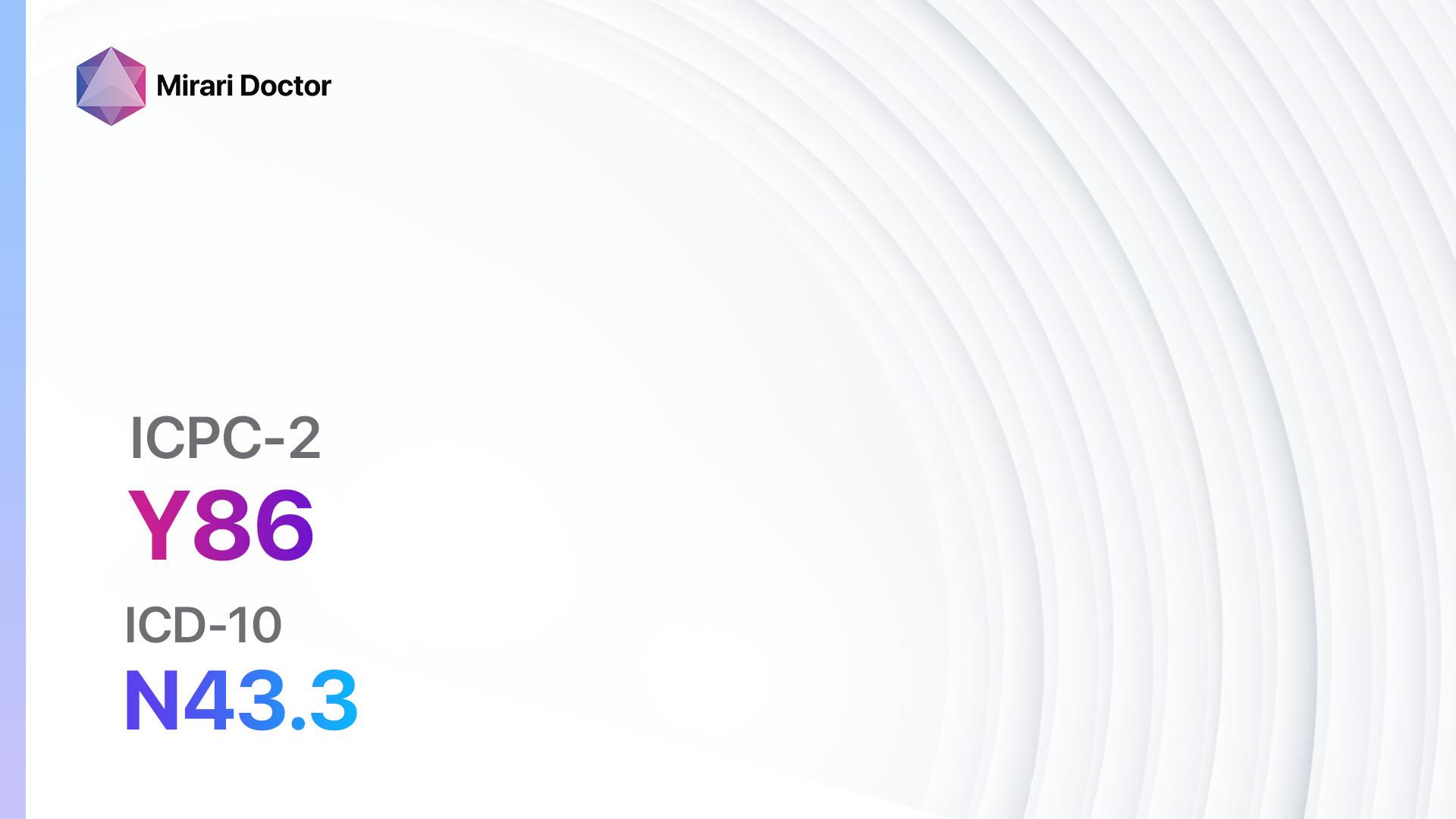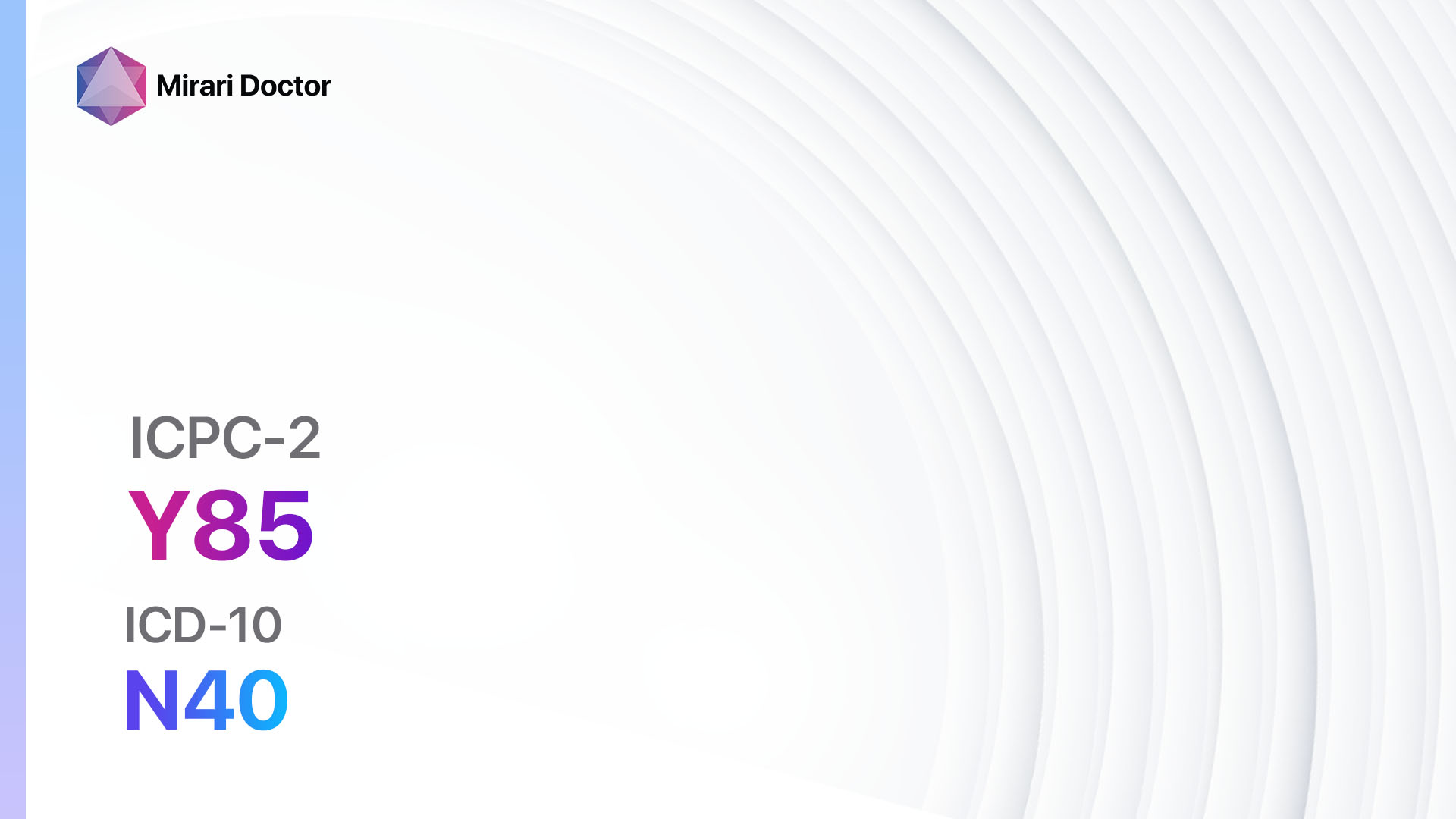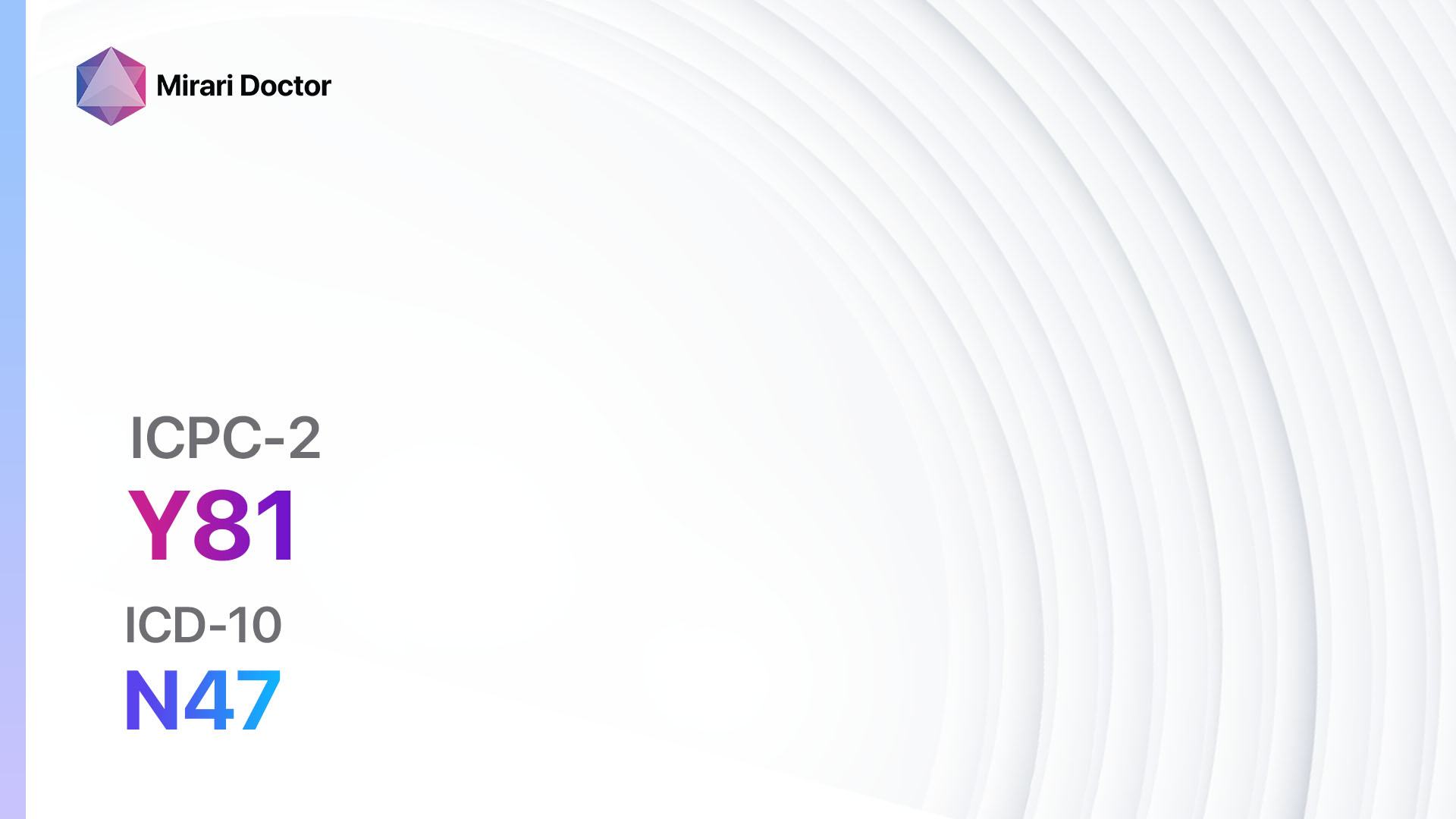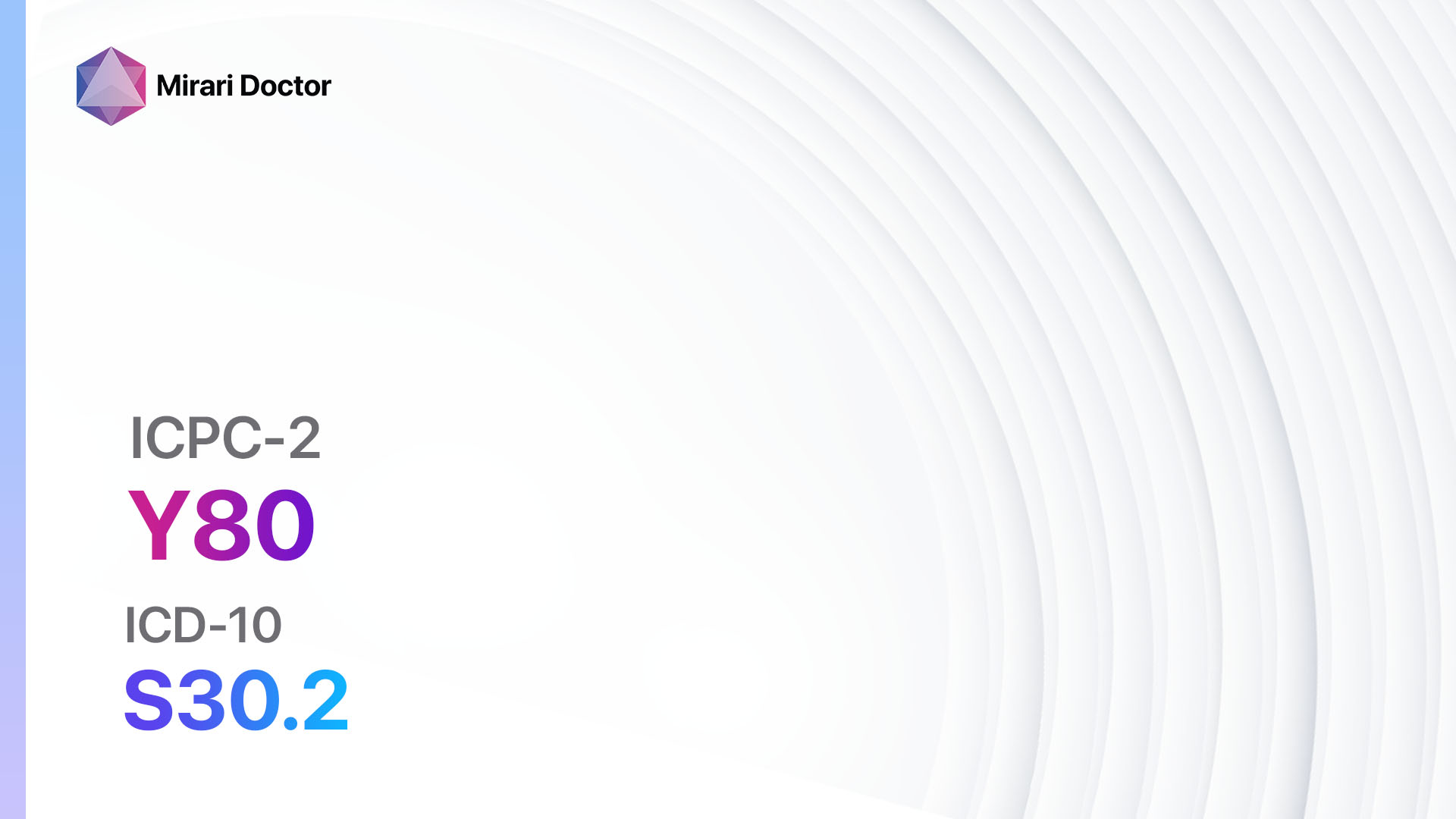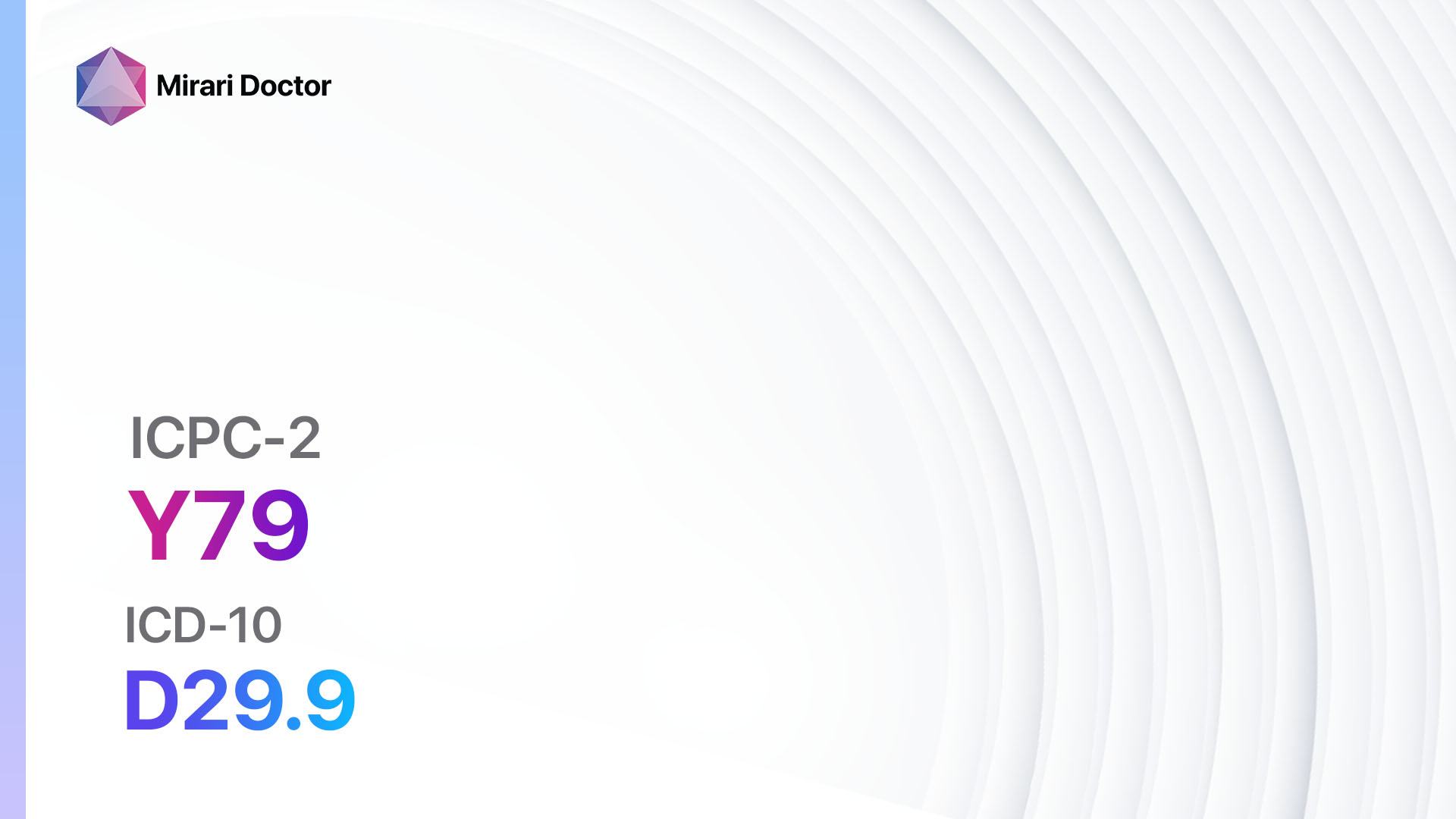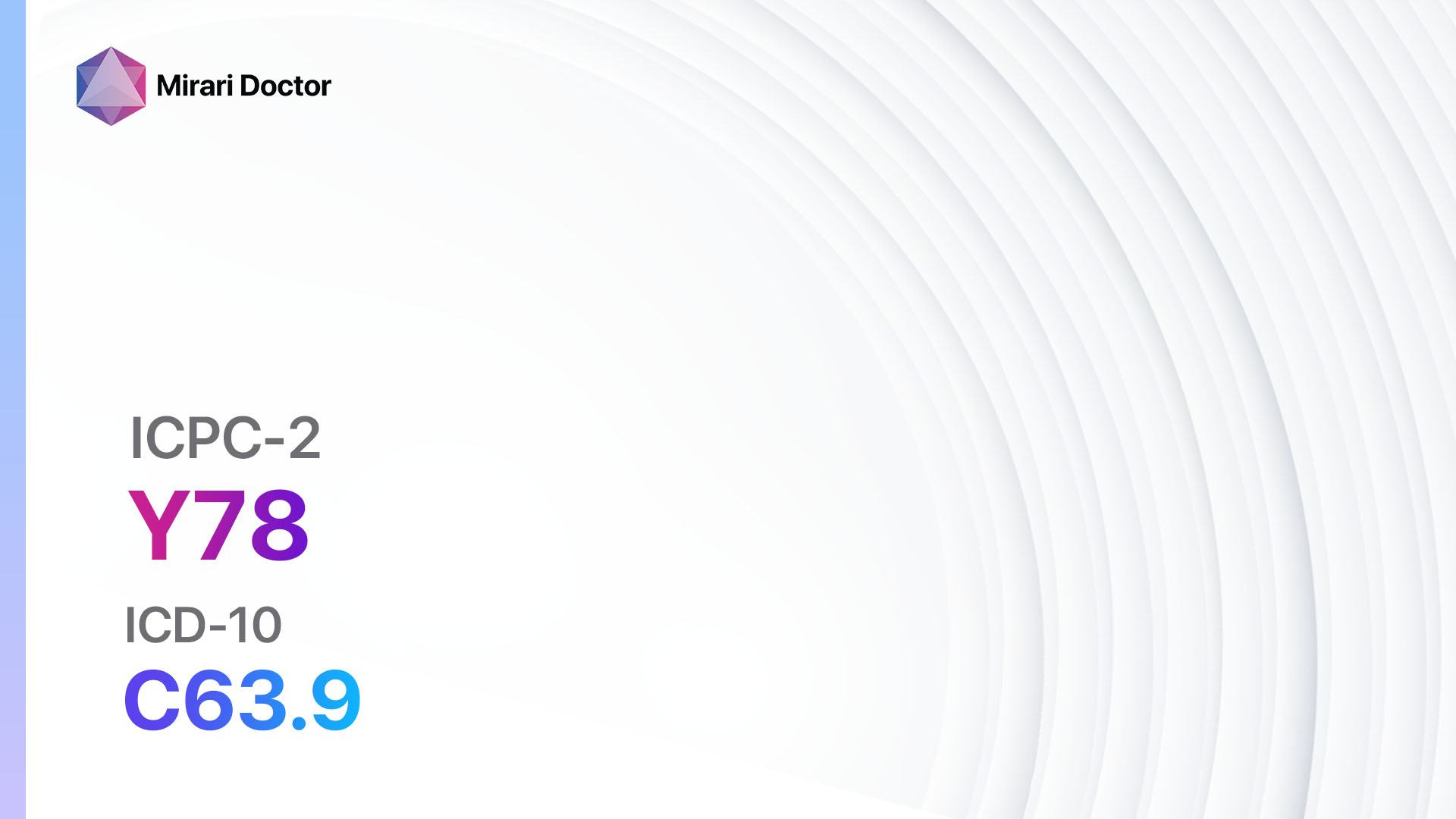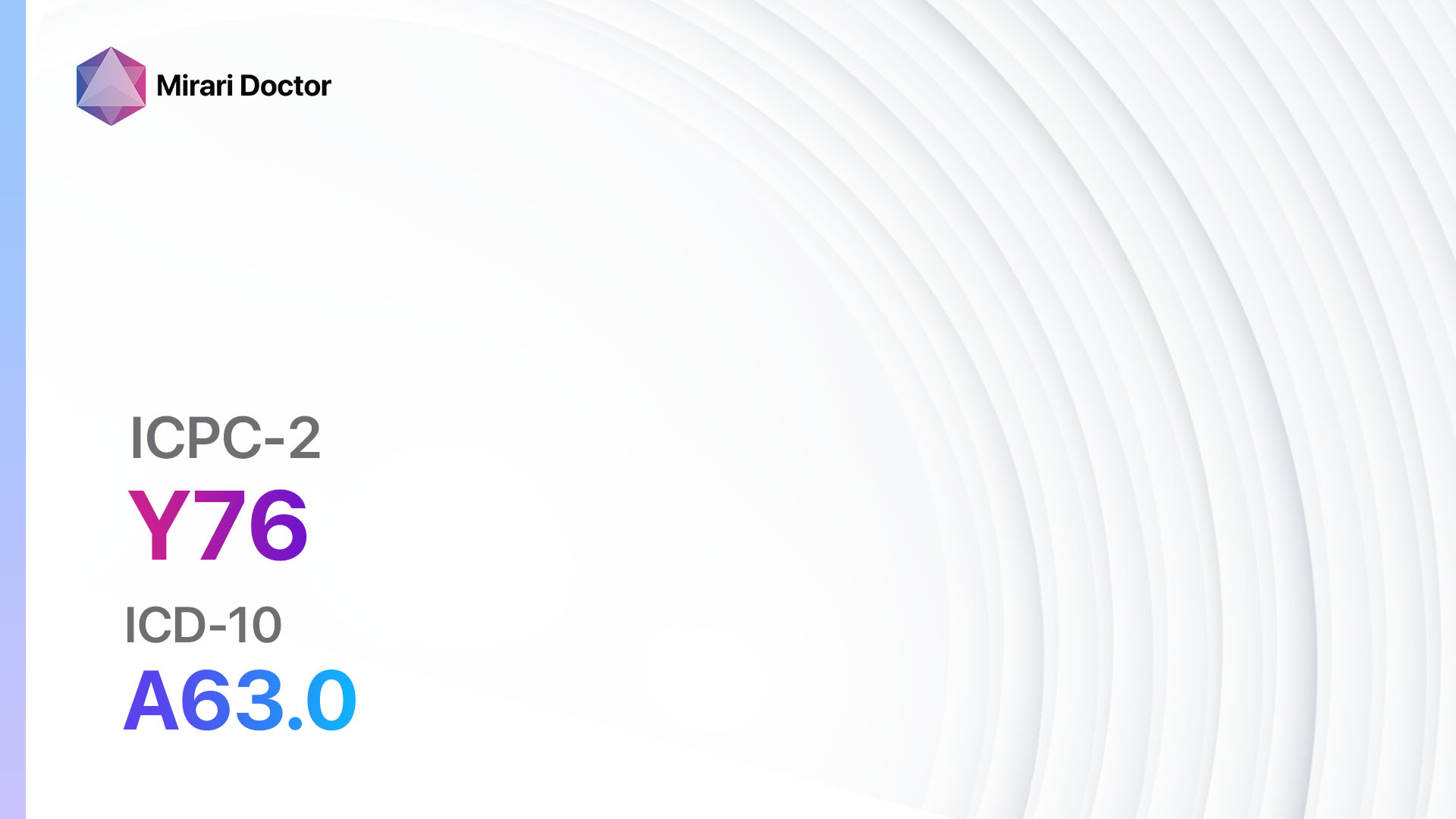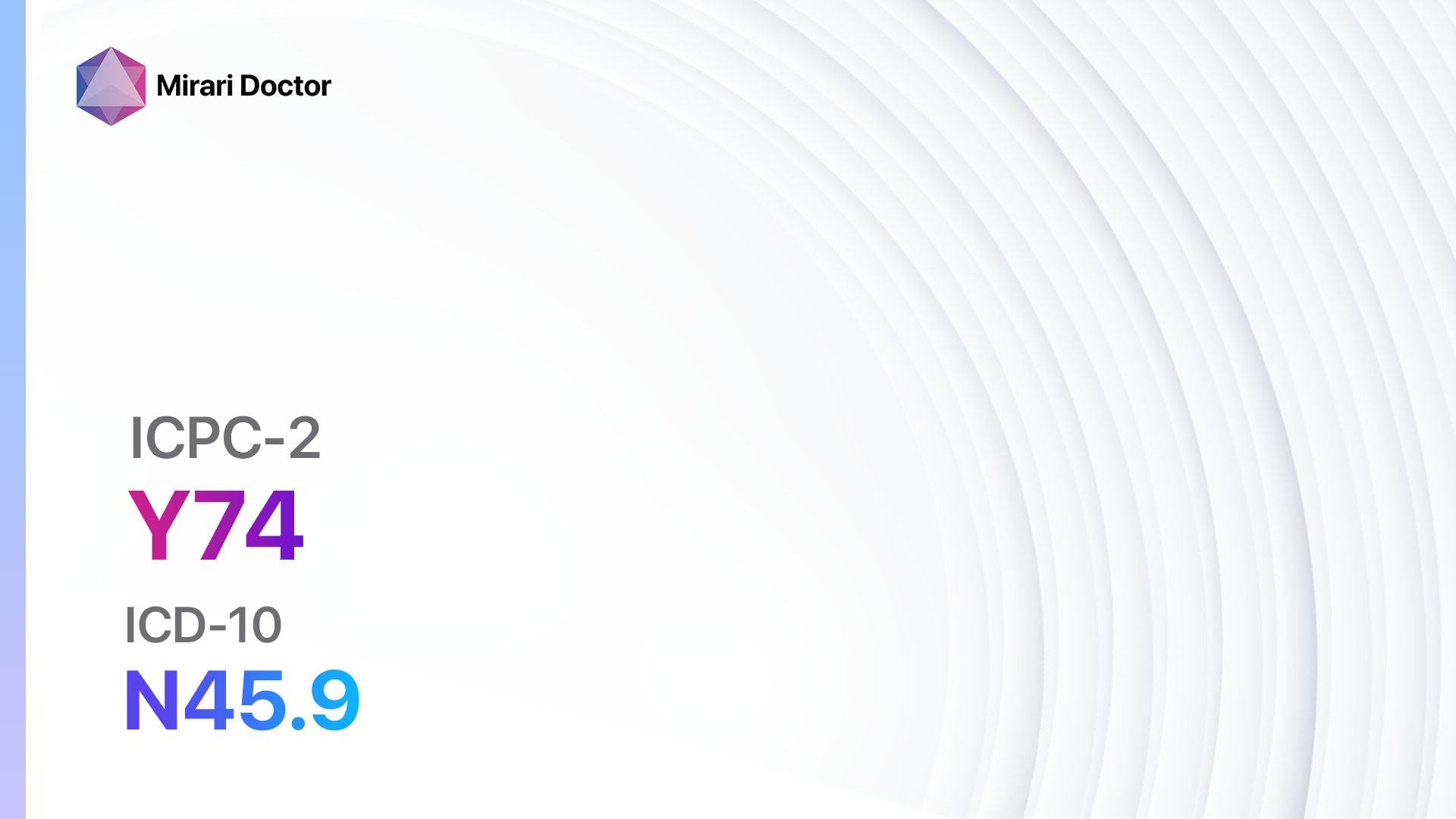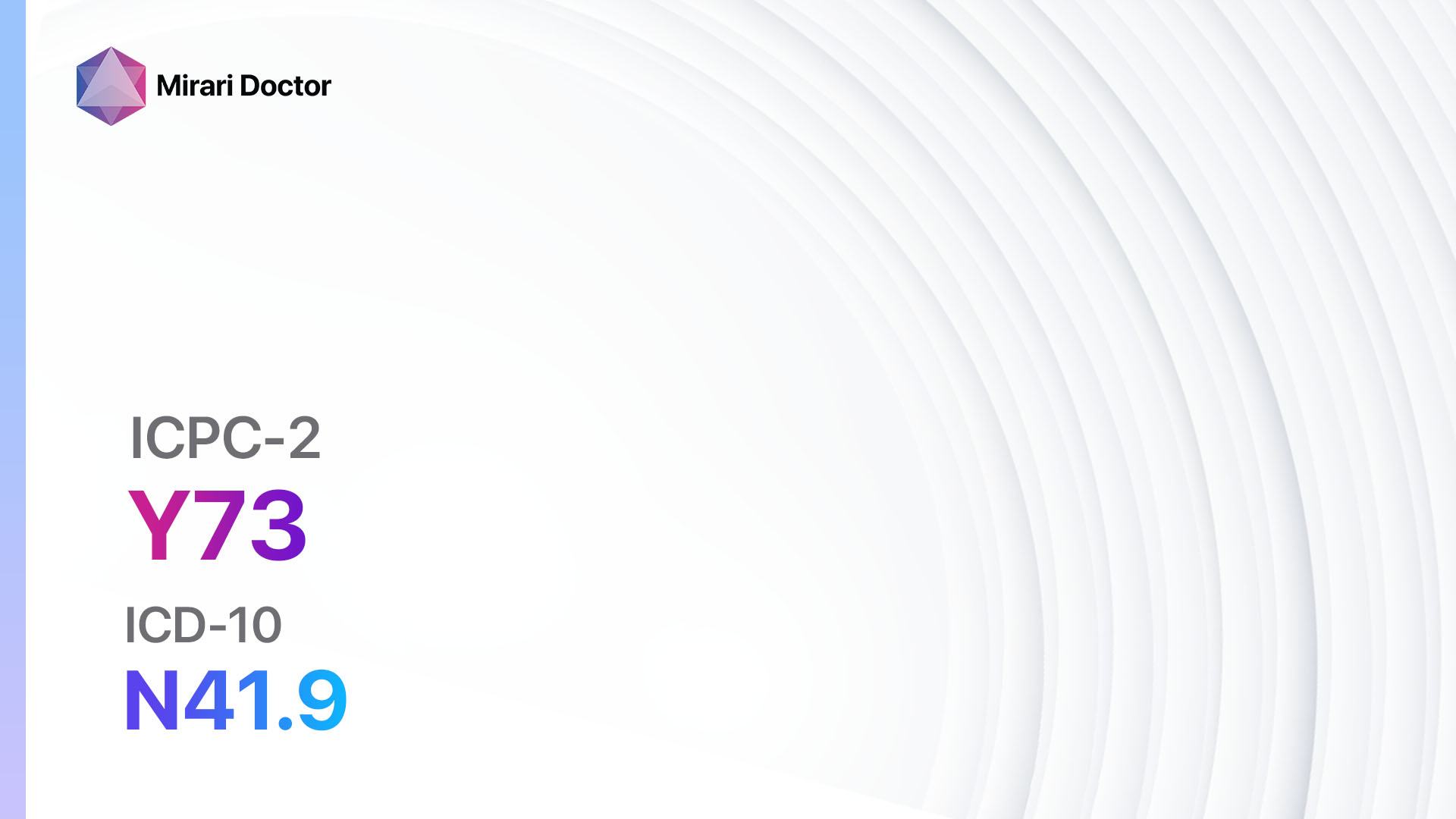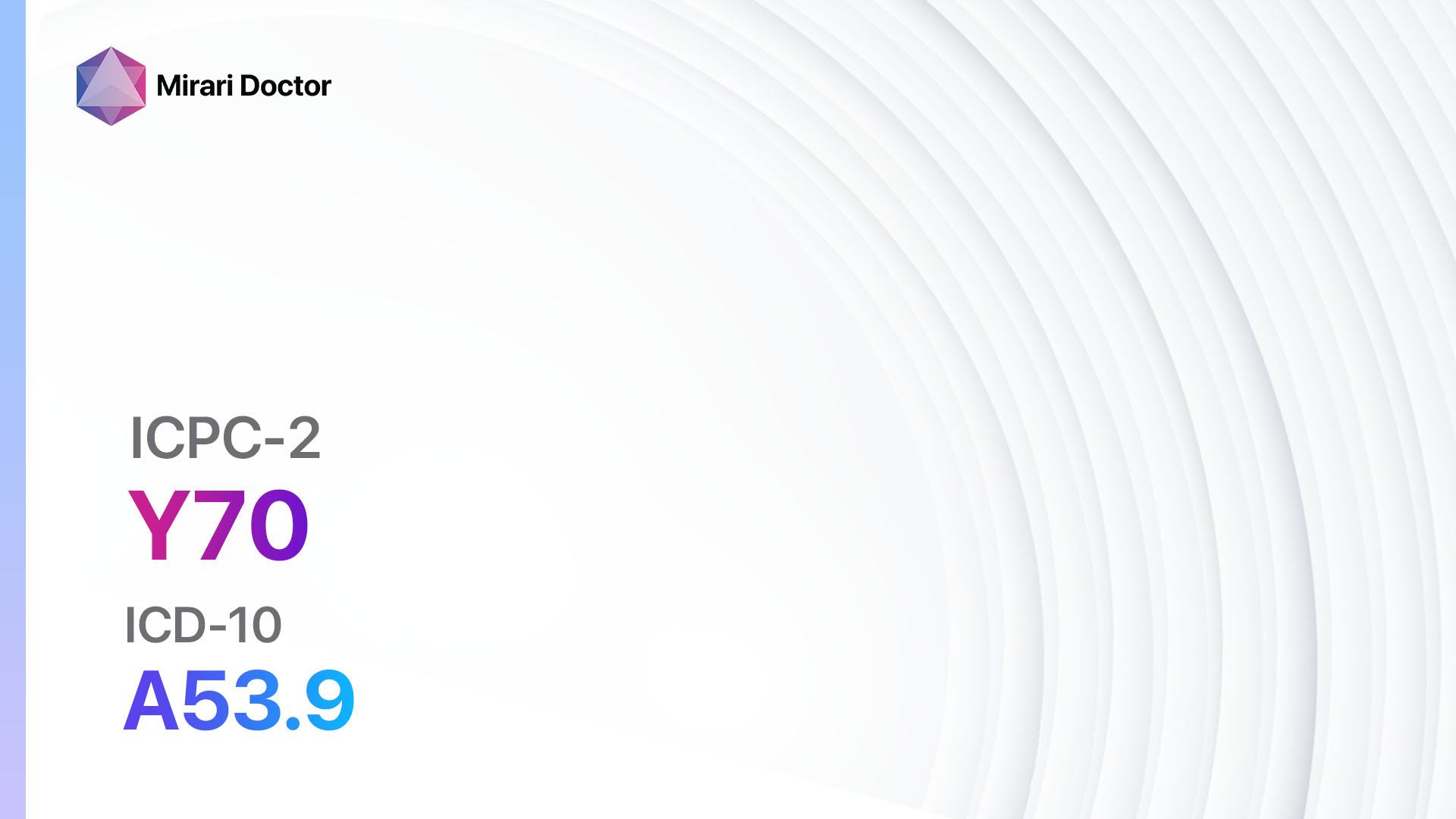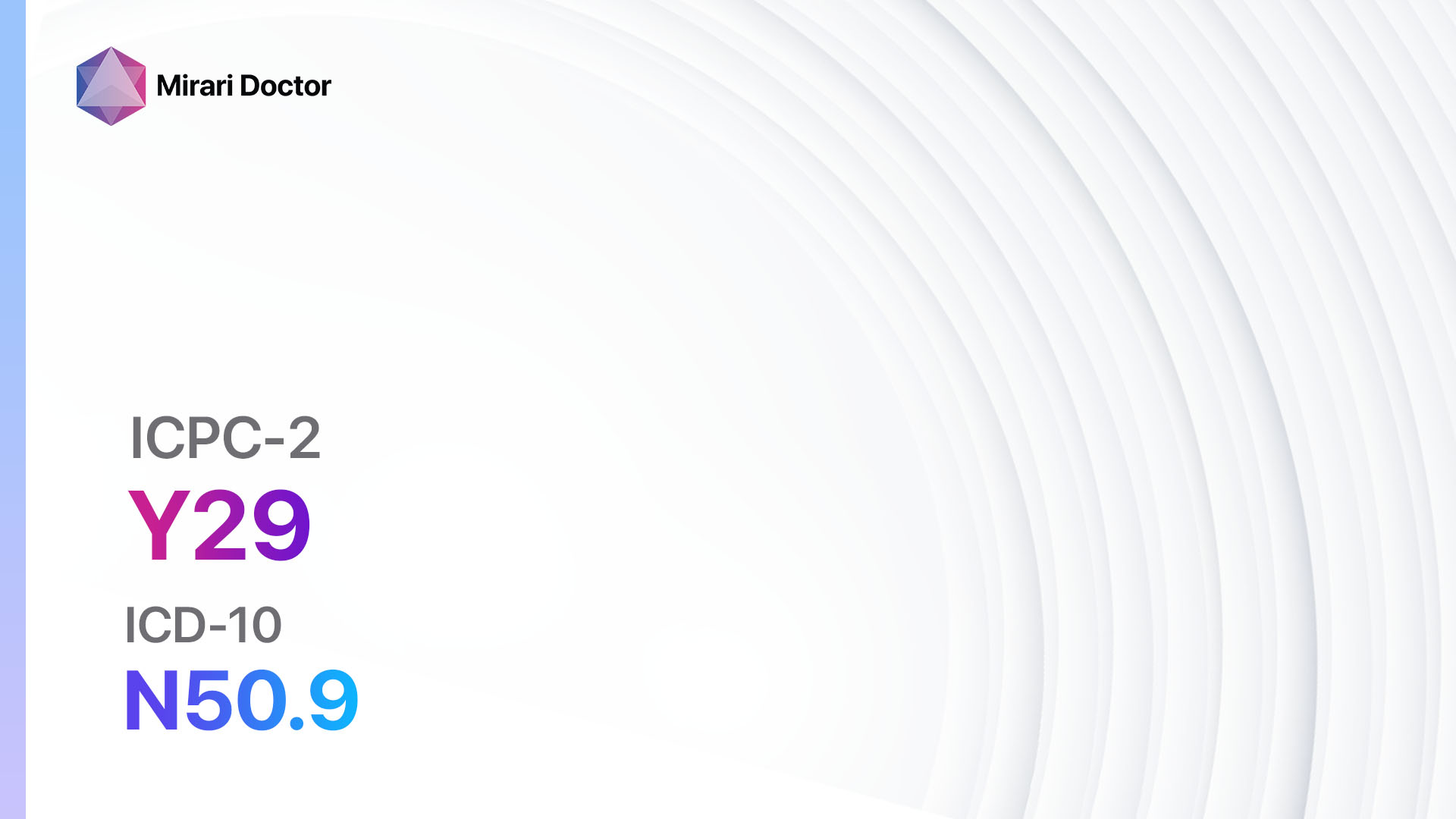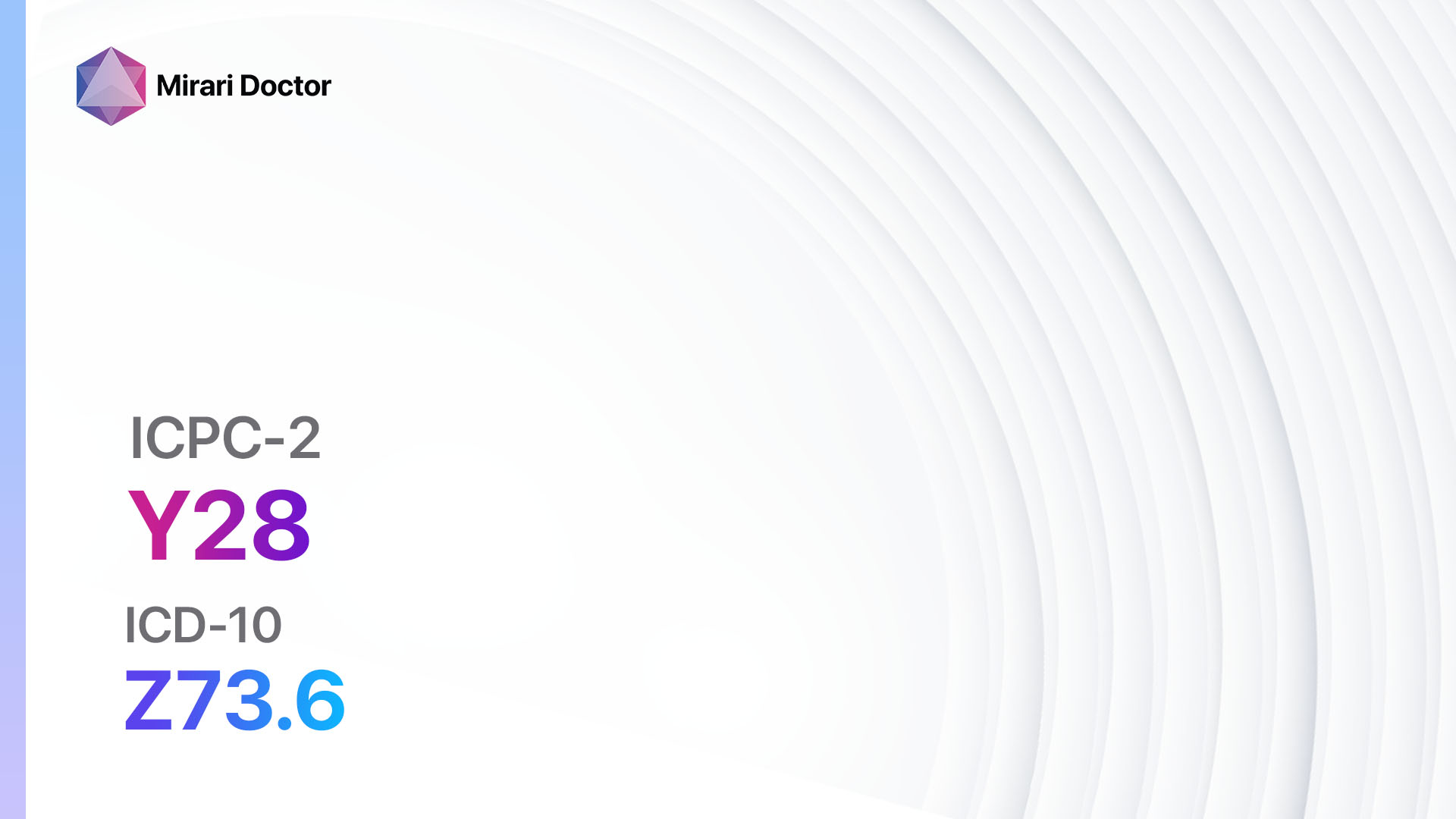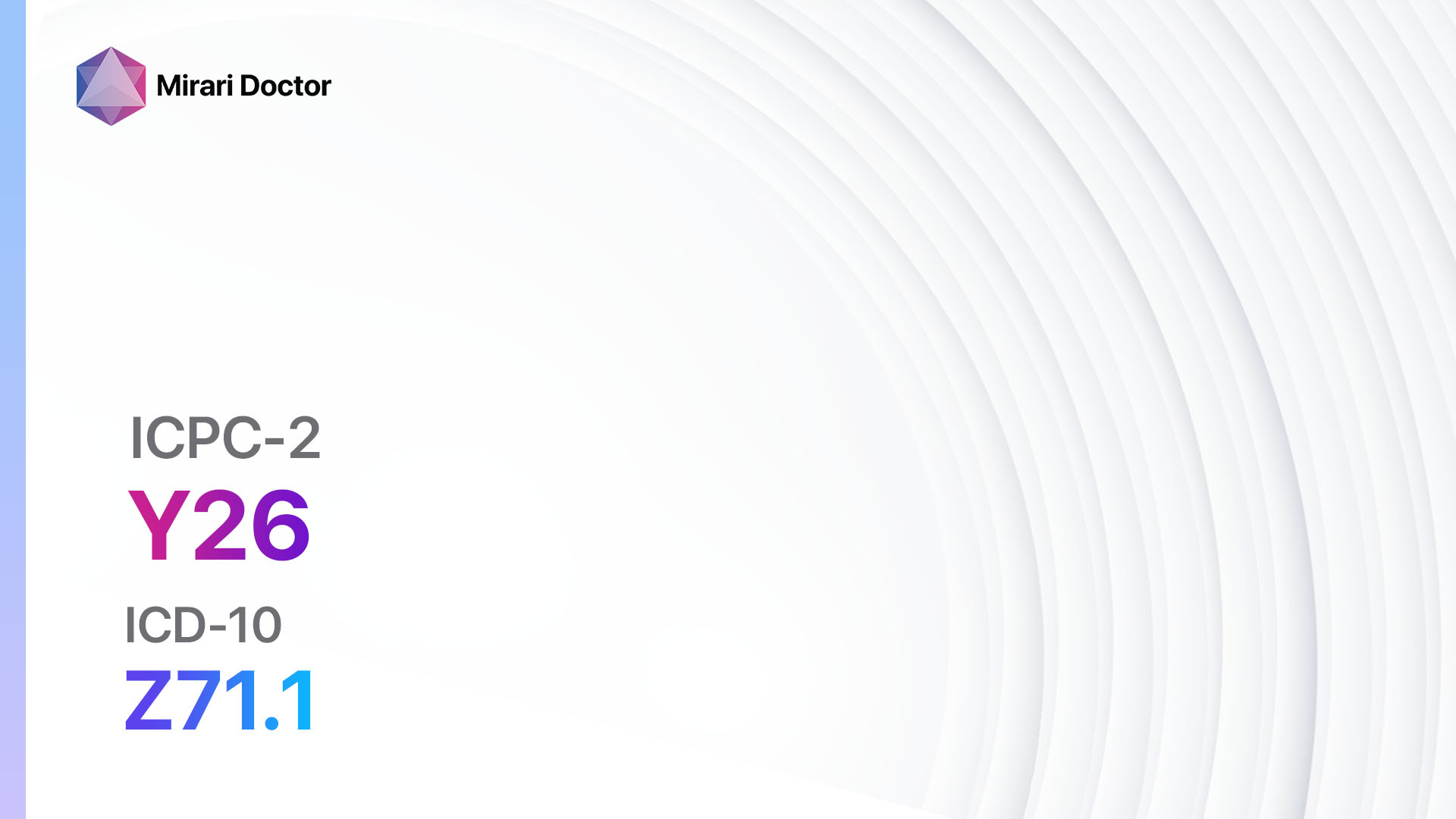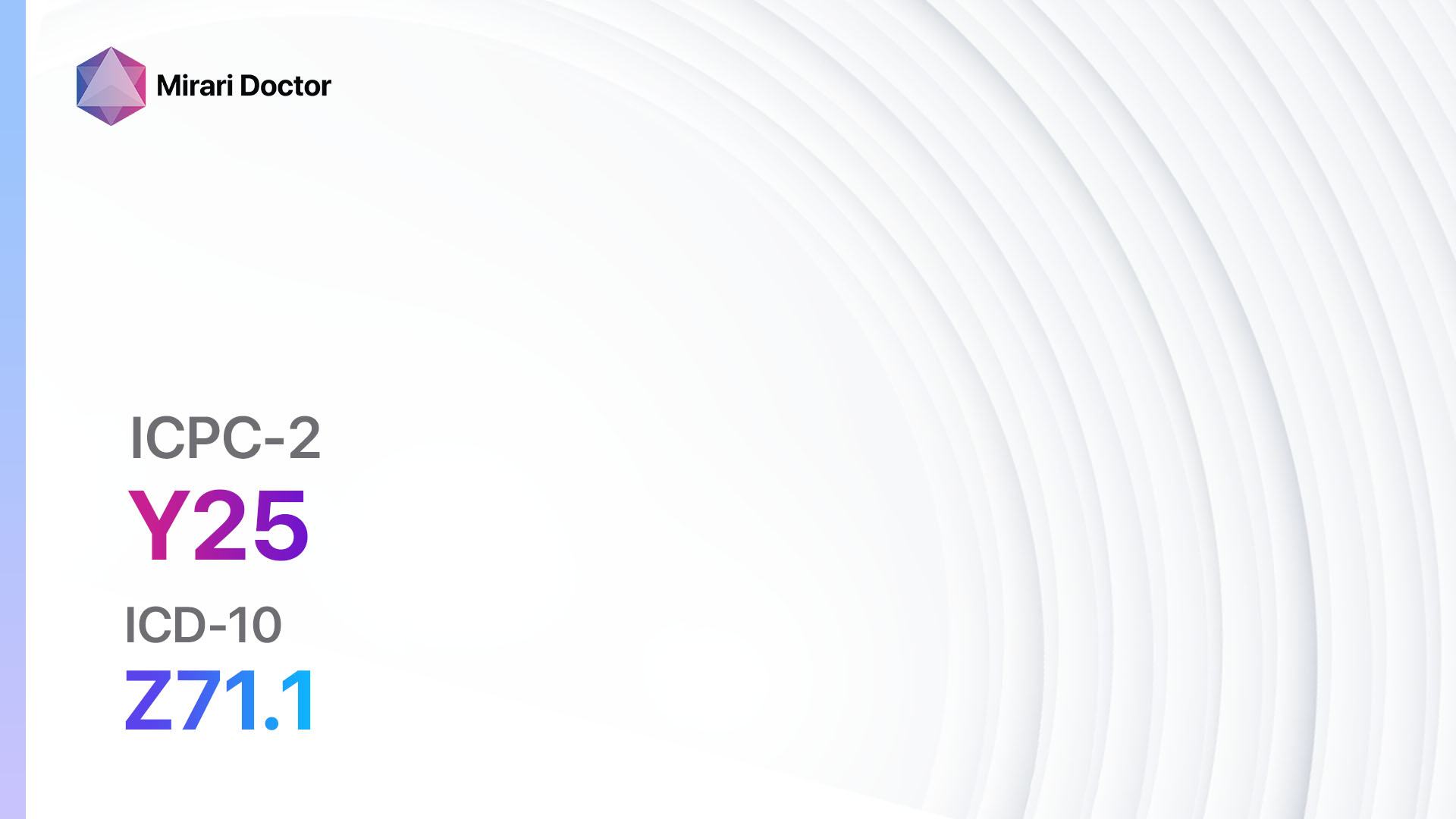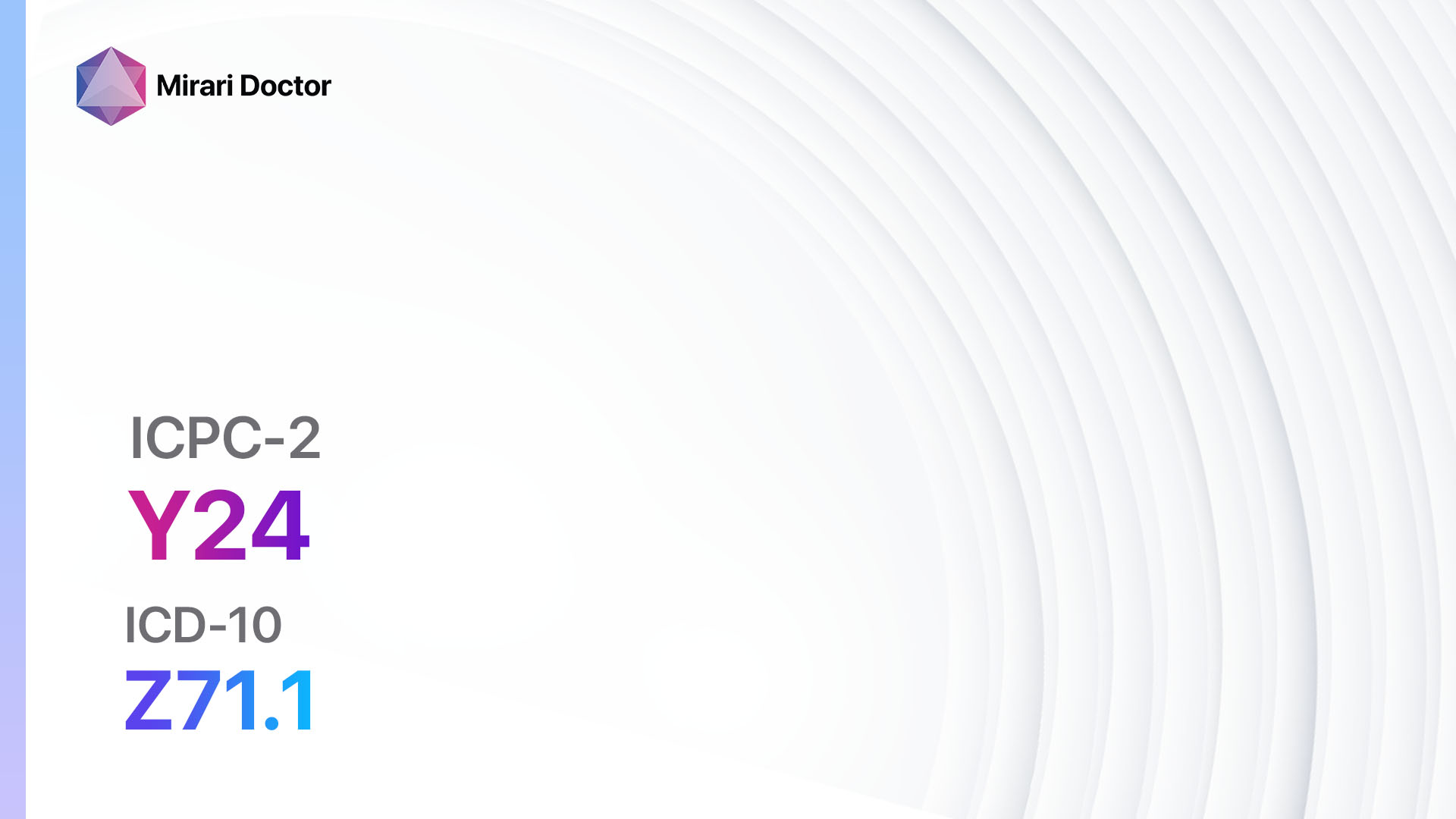
Introduction
Prostate cancer, classified as a malignant neoplasm of the prostate gland, is a significant health condition that affects men worldwide[1]. The aim of this guide is to provide a comprehensive overview of the diagnostic steps, possible interventions, and lifestyle changes that can help manage and treat this condition effectively.
Codes
Symptoms
- Difficulty urinating: Patients may experience a weak or interrupted urine flow, frequent urination, or the need to urinate during the night[2].
- Blood in urine or semen: Prostate cancer can cause blood to appear in the urine or semen[3].
- Erectile dysfunction: Patients may experience difficulties in achieving or maintaining an erection.
- Pain or discomfort: Advanced stages of prostate cancer can cause pain or discomfort in the pelvic area, back, hips, or thighs.
- Bone pain: Cancer that has spread to the bones may cause bone pain, particularly in the hips, spine, and pelvis[4].
Causes
- Age: Prostate cancer is more common in older men, with the risk increasing significantly after the age of 50[5].
- Family history: Men with a family history of prostate cancer, particularly in a father or brother, have a higher risk of developing the disease[6].
- Ethnicity: African American men have a higher risk of developing prostate cancer compared to men of other ethnic backgrounds[7].
- Genetic mutations: Inherited mutations in certain genes, such as BRCA1 and BRCA2, can increase the risk of prostate cancer[8].
- Hormonal factors: High levels of testosterone or other male hormones may contribute to the development of prostate cancer.
Diagnostic Steps
Medical History
- Gather relevant patient information, including age, family history of prostate cancer, and any symptoms or complaints related to the disease.
- Assess risk factors, such as ethnicity and exposure to potential carcinogens.
- Review the patient’s medical history to identify any comorbidities or conditions that may influence the treatment plan[9].
Physical Examination
- Perform a digital rectal exam (DRE) to assess the size, shape, and texture of the prostate gland.
- Check for any lumps, nodules, or abnormalities during the DRE.
- Evaluate the patient for any signs of advanced disease, such as bone tenderness or lymph node enlargement[10].
Laboratory Tests
- Prostate-specific antigen (PSA) blood test: Measure the level of PSA, a protein produced by the prostate gland, in the patient’s blood. Elevated PSA levels may indicate the presence of prostate cancer.
- Free PSA test: This test measures the percentage of unbound PSA in the blood. It can help differentiate between benign prostatic hyperplasia and prostate cancer.
- Prostate biopsy: If the PSA levels are elevated or if abnormalities are found during the physical examination, a biopsy may be performed to collect tissue samples from the prostate gland for further analysis.
Diagnostic Imaging
- Transrectal ultrasound (TRUS): This imaging technique uses sound waves to create images of the prostate gland. It can help identify any abnormalities or tumors.
- Magnetic resonance imaging (MRI): An MRI scan may be performed to assess the extent of the disease, particularly when planning for treatment options like surgery or radiation therapy.
- Bone scan: This imaging test can detect the spread of prostate cancer to the bones. It involves injecting a small amount of radioactive material into the bloodstream, which is then detected by a scanner.
Other Tests
- Genetic testing: Patients with a family history of prostate cancer or certain genetic mutations may undergo genetic testing to identify any inherited risk factors.
- Positron emission tomography (PET) scan: PET scans can help determine if the cancer has spread beyond the prostate gland and assist in staging the disease.
Follow-up and Patient Education
- After diagnosis, it is crucial to establish a follow-up plan to monitor the patient’s progress, assess treatment response, and manage any potential side effects.
- Provide patients with educational materials about prostate cancer, including information about treatment options, lifestyle modifications, and support resources.
Possible Interventions
Traditional Interventions
Medications:
Top 5 drugs for Orchitis/epididymitis:
- Leuprolide:
- Cost: $500-$1,000 per month.
- Contraindications: Hypersensitivity to leuprolide or similar drugs.
- Side effects: Hot flashes, decreased libido, erectile dysfunction.
- Severe side effects: Allergic reactions, cardiovascular events.
- Drug interactions: None reported.
- Warning: Regular monitoring of testosterone levels required.
- Bicalutamide:
- Cost: $300-$600 per month.
- Contraindications: Hypersensitivity to bicalutamide or similar drugs, severe liver disease.
- Side effects: Hot flashes, breast tenderness, decreased libido.
- Severe side effects: Hepatotoxicity, respiratory disorders.
- Drug interactions: Warfarin, statins, certain antifungals.
- Warning: Regular liver function tests required.
- Abiraterone:
- Cost: $8,000-$12,000 per month.
- Contraindications: Severe hepatic impairment, hypersensitivity to abiraterone or similar drugs.
- Side effects: Fatigue, joint swelling, hypertension.
- Severe side effects: Hepatotoxicity, adrenal insufficiency.
- Drug interactions: Certain anticoagulants, certain anticonvulsants.
- Warning: Regular liver function tests required.
- Enzalutamide:
- Cost: $9,000-$11,000 per month.
- Contraindications: Hypersensitivity to enzalutamide or similar drugs.
- Side effects: Fatigue, hot flashes, hypertension.
- Severe side effects: Seizures, posterior reversible encephalopathy syndrome (PRES).
- Drug interactions: Certain anticoagulants, certain anticonvulsants.
- Warning: Risk of seizures, regular monitoring of blood pressure.
- Docetaxel:
- Cost: $1,500-$2,000 per cycle.
- Contraindications: Severe hepatic impairment, severe neutropenia.
- Side effects: Fatigue, hair loss, peripheral neuropathy.
- Severe side effects: Neutropenic fever, severe allergic reactions.
- Drug interactions: Certain anticoagulants, certain anticonvulsants.
- Warning: Regular monitoring of blood counts required.
Alternative Drugs:
- Cabazitaxel: An alternative chemotherapy option for patients who have progressed after docetaxel treatment.
- Radium-223: A radioactive drug that can be used to treat prostate cancer that has spread to the bones.
- Pembrolizumab: An immunotherapy drug that may be considered for patients with advanced prostate cancer.
Surgical Procedures:
- Radical prostatectomy: Surgical removal of the prostate gland and surrounding tissues. Cost: $10,000-$20,000.
- Radiation therapy: High-energy radiation is used to kill cancer cells. Cost: $8,000-$15,000.
- Brachytherapy: Radioactive seeds or pellets are implanted in the prostate to deliver targeted radiation. Cost: $10,000-$15,000.
- Cryotherapy: Freezing techniques are used to destroy cancer cells. Cost: $8,000-$12,000.
Alternative Interventions
- Acupuncture: May help manage treatment-related side effects and improve overall well-being. Cost: $60-$120 per session.
- Herbal supplements: Some herbal supplements, such as saw palmetto and green tea extract, are believed to have potential benefits in prostate cancer management. Cost: Varies depending on the specific supplement.
- Dietary modifications: A diet rich in fruits, vegetables, and whole grains, while low in red and processed meats, may help reduce the risk of prostate cancer progression. Cost: Varies depending on individual food choices.
- Exercise: Regular physical activity, such as walking or jogging, can help improve overall health and potentially reduce the risk of cancer progression. Cost: Varies depending on individual preferences and gym membership fees.
Lifestyle Interventions
- Smoking cessation: Quitting smoking can improve overall health and reduce the risk of cancer progression. Cost: Varies depending on individual smoking cessation methods.
- Healthy weight management: Maintaining a healthy weight through a balanced diet and regular exercise may help improve treatment outcomes. Cost: Varies depending on individual food choices and gym membership fees.
- Stress management: Engaging in stress-reducing activities, such as meditation or yoga, can help improve overall well-being during prostate cancer treatment. Cost: Varies depending on individual preferences and participation in classes or programs.
It is important to note that the cost ranges provided are approximate and may vary depending on the location and availability of the interventions.
Mirari Cold Plasma Alternative Intervention
Understanding Mirari Cold Plasma
- Safe and Non-Invasive Treatment: Mirari Cold Plasma is a safe and non-invasive treatment option for various skin conditions. It does not require incisions, minimizing the risk of scarring, bleeding, or tissue damage.
- Efficient Extraction of Foreign Bodies: Mirari Cold Plasma facilitates the removal of foreign bodies from the skin by degrading and dissociating organic matter, allowing easier access and extraction.
- Pain Reduction and Comfort: Mirari Cold Plasma has a local analgesic effect, providing pain relief during the treatment, making it more comfortable for the patient.
- Reduced Risk of Infection: Mirari Cold Plasma has antimicrobial properties, effectively killing bacteria and reducing the risk of infection.
- Accelerated Healing and Minimal Scarring: Mirari Cold Plasma stimulates wound healing and tissue regeneration, reducing healing time and minimizing the formation of scars.
Mirari Cold Plasma Prescription
Video instructions for using Mirari Cold Plasma Device – Y77 Malignant neoplasm prostate (ICD-10:C61)
| Mild | Moderate | Severe |
| Mode setting: 2 (Wound Healing) Location: 2 (Prostate & Uterus) Morning: 15 minutes, Evening: 15 minutes |
Mode setting: 2 (Wound Healing) Location: 2 (Prostate & Uterus) Morning: 30 minutes, Lunch: 30 minutes, Evening: 30 minutes |
Mode setting: 2 (Wound Healing) Location: 2 (Prostate & Uterus) Morning: 30 minutes, Lunch: 30 minutes, Evening: 30 minutes |
| Mode setting: 5 (Prostatitis Therapy) Location: 2 (Prostate & Uterus) Morning: 15 minutes, Evening: 15 minutes |
Mode setting: 5 (Prostatitis Therapy) Location: 2 (Prostate & Uterus) Morning: 30 minutes, Lunch: 30 minutes, Evening: 30 minutes |
Mode setting: 5 (Prostatitis Therapy) Location: 2 (Prostate & Uterus) Morning: 30 minutes, Lunch: 30 minutes, Evening: 30 minutes |
| Mode setting: 5 (Prostatitis Therapy) Location: 2 (Prostate & Uterus) Morning: 15 minutes, Evening: 15 minutes |
Mode setting: 5 (Prostatitis Therapy) Location: 2 (Prostate & Uterus) Morning: 30 minutes, Lunch: 30 minutes, Evening: 30 minutes |
Mode setting: 5 (Prostatitis Therapy) Location: 2 (Prostate & Uterus) Morning: 30 minutes, Lunch: 30 minutes, Evening: 30 minutes |
| Mode setting: 7 (Immunotherapy) Location: 1 (Sacrum) Morning: 15 minutes, Evening: 15 minutes |
Mode setting: 7 (Immunotherapy) Location: 1 (Sacrum) Morning: 30 minutes, Lunch: 30 minutes, Evening: 30 minutes |
Mode setting: 7 (Immunotherapy) Location: 1 (Sacrum) Morning: 30 minutes, Lunch: 30 minutes, Evening: 30 minutes |
| Total Morning: 60 minutes approx. $10 USD, Evening: 60 minutes approx. $10 USD |
Total Morning: 120 minutes approx. $20 USD, Lunch: 120 minutes approx. $20 USD, Evening: 120 minutes approx. $20 USD, |
Total Morning: 120 minutes approx. $20 USD, Lunch: 120 minutes approx. $20 USD, Evening: 120 minutes approx. $20 USD, |
| Usual treatment for 7-60 days approx. $140 USD – $1200 USD | Usual treatment for 6-8 weeks approx. $2,520 USD – $3,360 USD |
Usual treatment for 3-6 months approx. $5,400 USD – $10,800 USD
|
 |
|
Use the Mirari Cold Plasma device to treat Malignant neoplasm prostate effectively.
WARNING: MIRARI COLD PLASMA IS DESIGNED FOR THE HUMAN BODY WITHOUT ANY ARTIFICIAL OR THIRD PARTY PRODUCTS. USE OF OTHER PRODUCTS IN COMBINATION WITH MIRARI COLD PLASMA MAY CAUSE UNPREDICTABLE EFFECTS, HARM OR INJURY. PLEASE CONSULT A MEDICAL PROFESSIONAL BEFORE COMBINING ANY OTHER PRODUCTS WITH USE OF MIRARI.
Step 1: Cleanse the Skin
- Start by cleaning the affected area of the skin with a gentle cleanser or mild soap and water. Gently pat the area dry with a clean towel.
Step 2: Prepare the Mirari Cold Plasma device
- Ensure that the Mirari Cold Plasma device is fully charged or has fresh batteries as per the manufacturer’s instructions. Make sure the device is clean and in good working condition.
- Switch on the Mirari device using the power button or by following the specific instructions provided with the device.
- Some Mirari devices may have adjustable settings for intensity or treatment duration. Follow the manufacturer’s instructions to select the appropriate settings based on your needs and the recommended guidelines.
Step 3: Apply the Device
- Place the Mirari device in direct contact with the affected area of the skin. Gently glide or hold the device over the skin surface, ensuring even coverage of the area experiencing.
- Slowly move the Mirari device in a circular motion or follow a specific pattern as indicated in the user manual. This helps ensure thorough treatment coverage.
Step 4: Monitor and Assess:
- Keep track of your progress and evaluate the effectiveness of the Mirari device in managing your Malignant neoplasm prostate. If you have any concerns or notice any adverse reactions, consult with your health care professional.
Note
This guide is for informational purposes only and should not replace the advice of a medical professional. Always consult with your healthcare provider or a qualified medical professional for personal advice, diagnosis, or treatment. Do not solely rely on the information presented here for decisions about your health. Use of this information is at your own risk. The authors of this guide, nor any associated entities or platforms, are not responsible for any potential adverse effects or outcomes based on the content.
Mirari Cold Plasma System Disclaimer
- Purpose: The Mirari Cold Plasma System is a Class 2 medical device designed for use by trained healthcare professionals. It is registered for use in Thailand and Vietnam. It is not intended for use outside of these locations.
- Informational Use: The content and information provided with the device are for educational and informational purposes only. They are not a substitute for professional medical advice or care.
- Variable Outcomes: While the device is approved for specific uses, individual outcomes can differ. We do not assert or guarantee specific medical outcomes.
- Consultation: Prior to utilizing the device or making decisions based on its content, it is essential to consult with a Certified Mirari Tele-Therapist and your medical healthcare provider regarding specific protocols.
- Liability: By using this device, users are acknowledging and accepting all potential risks. Neither the manufacturer nor the distributor will be held accountable for any adverse reactions, injuries, or damages stemming from its use.
- Geographical Availability: This device has received approval for designated purposes by the Thai and Vietnam FDA. As of now, outside of Thailand and Vietnam, the Mirari Cold Plasma System is not available for purchase or use.
References
- Siegel RL, Miller KD, Jemal A. Cancer statistics, 2020. CA Cancer J Clin. 2020;70(1):7-30.
- Litwin MS, Tan HJ. The Diagnosis and Treatment of Prostate Cancer: A Review. JAMA. 2017;317(24):2532-2542.
- Hematuria as a marker of occult urinary tract cancer: advice for high-value care from the American College of Physicians. Ann Intern Med. 2016;164(7):488-497.
- Bubendorf L, Schöpfer A, Wagner U, et al. Metastatic patterns of prostate cancer: an autopsy study of 1,589 patients. Hum Pathol. 2000;31(5):578-583.
- Bell KJ, Del Mar C, Wright G, Dickinson J, Glasziou P. Prevalence of incidental prostate cancer: A systematic review of autopsy studies. Int J Cancer. 2015;137(7):1749-1757.
- Kicinski M, Vangronsveld J, Nawrot TS. An epidemiological reappraisal of the familial aggregation of prostate cancer: a meta-analysis. PLoS One. 2011;6(10):e27130.
- Shenoy D, Packianathan S, Chen AM, Vijayakumar S. Do African-American men need separate prostate cancer screening guidelines? BMC Urol. 2016;16(1):19.
- Pritchard CC, Mateo J, Walsh MF, et al. Inherited DNA-Repair Gene Mutations in Men with Metastatic Prostate Cancer. N Engl J Med. 2016;375(5):443-453.
- Mottet N, Bellmunt J, Bolla M, et al. EAU-ESTRO-SIOG Guidelines on Prostate Cancer. Part 1: Screening, Diagnosis, and Local Treatment with Curative Intent. Eur Urol. 2017;71(4):618-629.
- Gosselaar C, Roobol MJ, Roemeling S, Schröder FH. The role of the digital rectal examination in subsequent screening visits in the European randomized study of screening for prostate cancer (ERSPC), Rotterdam. Eur Urol. 2008;54(3):581-588.
Related articles
Made in USA



